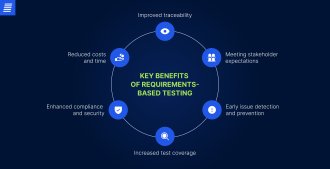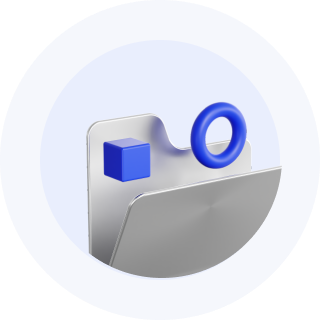
Contact us
Our team would love to hear from you.

Requirements testing is an approach where test cases, conditions, and data are derived from requirements. It is done to find out if the project requirements are fully explained and do not conflict. QA testing requirements include functional and non-functional attributes assessment (performance, reliability, usability). To perform requirements testing, QA engineers get information from the BA or PM who are involved in the collection and description of requirements for a software product.
Requirements testing is an important stage of the testing process which always helps optimize the work of the team and avoid misunderstandings. The requirements testing process ensures the resulting quality of the software solution from the very beginning. Therefore, before testing an application, it is necessary to solve important problems related to the incomprehensibility of the requirements, their frequent changeability, last-minute changes, and incorrect interpretation of the requirements. As a result, the customer gets a high-quality competitive product developed in compliance with all the requirements stated.
There are 3 types of requirements testing:
When the QA engineer gets the requirements, it is necessary to know which attributes to test to ensure the product quality. We have collected the most widespread ones:
If businesses want to ensure the superior quality of their end products, implementing requirements-based testing is crucial. The most significant benefits of this type of testing include:


Requirements-based testing deeply depends on requirements elicited by stakeholders and may have specific challenge:
When all the requirements are tested and updated, QA engineers write test cases for requirements and start test execution. If you are looking for software quality assurance services, EffectiveSoft QA team is at your disposal. Just contact us, and we will find the best solution for your business.

Requirement-based testing is the approach where data, conditions, and functional and non-functional test cases are derived from the project requirements. The main purpose of this type of testing is to ensure that all software aspects meet the predefined criteria and deliver seamless functionality.
Requirements-based testing includes a series of well-defined steps, including requirements gathering and analysis; test planning, design, and execution; defect tracking and resolution; and test closure. Ensuring the traceability of requirements helps maintain transparency and consistency throughout the entire process.
Yes, requirements-based testing is considered black-box testing, which focuses on testing software against specified requirements without diving into a code structure and internal workings of the software.
Whether you need requirements-based software testing, white-box testing, or grey-box testing, hiring EffectiveSoft is the ideal solution in any scenario. Our team of 40+ QA engineers has significant experience conducting various types of manual and automated testing, including unit, integration, performance, security, scalability, and other tests. More perks of choosing EffectiveSoft as your requirements-based software testing company encompass our fully equipped testing lab, comprehensive QA approach, and ability to satisfy the needs of diverse industries like healthcare, manufacturing, financial services, and logistics.
To ensure an effective process of requirements-based testing, QA engineers implement a wide range of best practices. They include early stakeholder involvement in eliciting the necessary requirements; ensuring the clarity, accuracy, and unambiguity of requirements; establishing and maintaining the links between the requirements and test cases by using suitable tools; supporting regular stakeholder communication; and more.
Can’t find the answer you are looking for?
Contact us and we will get in touch with you shortly.
Our team would love to hear from you.
Fill out the form, and we’ve got you covered.
What happens next?
San Diego, California
4445 Eastgate Mall, Suite 200
92121, 1-800-288-9659
San Francisco, California
50 California St #1500
94111, 1-800-288-9659
Pittsburgh, Pennsylvania
One Oxford Centre, 500 Grant St Suite 2900
15219, 1-800-288-9659
Durham, North Carolina
RTP Meridian, 2530 Meridian Pkwy Suite 300
27713, 1-800-288-9659
San Jose, Costa Rica
C. 118B, Trejos Montealegre
10203, 1-800-288-9659